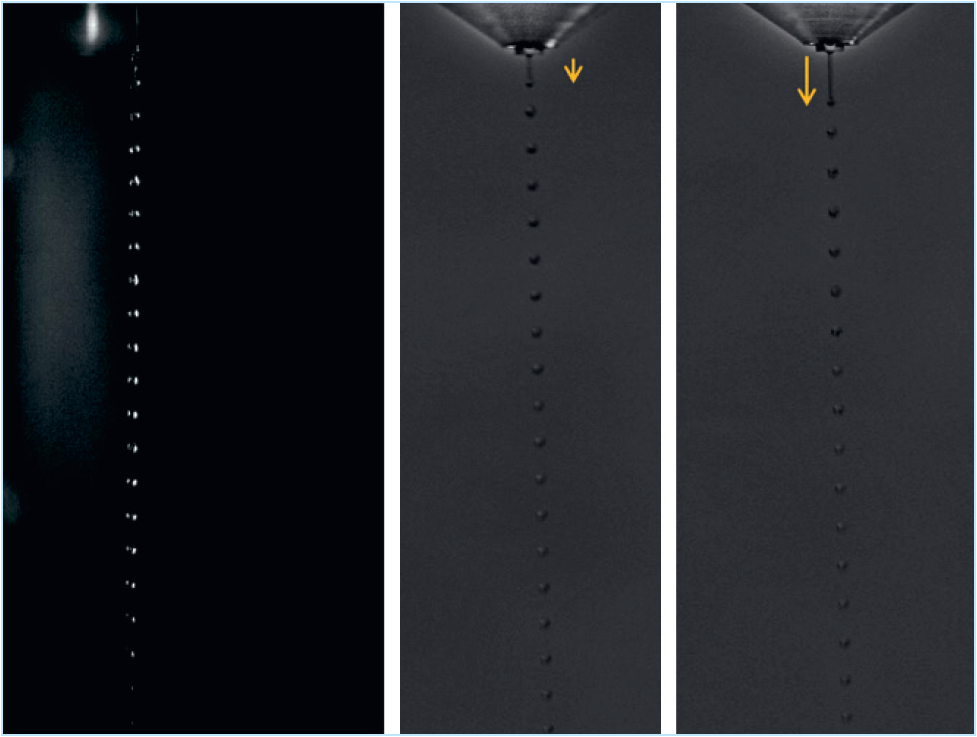
LYnfinity - Spraying
1. Introduction to Spray Freeze Drying
Freeze drying has traditionally been a batch process making it both time consuming and energy intensive. While the use of new process analytical technology has aided in process understanding, most processes are run conservatively, making it inherently inefficient.
The conservative approach is partly due to lack of equipment limit knowledge at different scales but mostly driven by product limits. For example, a product with larger concentration of active pharmaceutical ingredient could be manufactured with lower fill volumes, but at the cost of higher product resistance in the cake. In the conventional approach to freeze-drying, the product is placed in vials or bulk containments directly on the shelf.
The drying rate is controlled by setting the shelf temperature and chamber pressure in the product chamber. It has been identified that poor thermal contact between the shelf and the containment is the rate limiting resistance to heat transfer. Moreover, the drying rate in such a configuration is a function of the coldest front in the product volume, the sublimation front. Recent findings have demonstrated the importance of radiation in the low-pressure environment which can be efficiently utilized in accelerating the process. With such findings, it becomes apparent that even though our process understanding has improved in leaps and bounds, its application to designing an efficient process-equipment configuration has not. Thus, there is a need to re-think the heat and mass transfer for making the process more efficient.
The proposed Technology focuses on bringing to the market a robust yet gentle continuous aseptic process for spray freeze-drying with an eye toward achieving high throughput/ high cycle efficiency.
This spray freezing drying process features a controlled spray of liquid product into a cryogenically cooled freezing tower. The resultant frozen particles of the liquid product are freeze-dried in the drying module. The drying chamber contents are both transported and heated to promote rapid sublimation and prevent agglomeration.
2. Application of the Technology
Continuous spray freeze drying can have a transcending impact on process efficiency related to Biologic drug substance storage, inhalation systems, antibiotics for bulk storage among others with direct powder dosing capabilities directly into product containment systems as outlined below.
• Antibiotics are often bulk dried, milled and powder filled now.
• Self-administration through the use of pre-filled syringe/cartridge system with improved process efficiency and better control within minimal human intervention.
• Of the total of 200 mAb in various stages of clinical development, 65% are freeze-dried. • Most Biologic drug substance (DS) are often stored and transported in cryogen vessels (>100 L) before being converted to drugs, making it extremely expensive. • Opportunity to reduce reconstitution time in hard to reconstitute products.
3. Benefits of Continuous Spray Freeze Drying
The Technology was designed to enable continuous lyophilization enabling processes with greater throughput flexibility. Direct thermal contact between frozen product and the shelf provides better process control, as there is no requirement for vials or any containment, for increased heat transfer efficiency and minimized scale up and scale down challenges.
The continuous spray freeze drying process starts with bulk liquid product and ends with discharging dried particles, featuring total containment from formulation to powder filling i.e. higher sterility assurance level, whereas traditional freeze drying requires additional external material handling such as during filling. Upon completion of drying, the uniform, dried spherical product allows for use of a variety of containers (vials, syringes, inhalation systems etc.).
Efficient and continuous operation allows for higher productivity and lower downtime, with potential to reduced CAPEX & OPEX. Below we briefly explain the spraying technology that allows for such uniform production of dried particles.
4. The Spraying Process
The product spray is initiated when a steady laminar product feed is broken into uniform droplets at the top of the freezing column. When a laminar liquid jet is mechanically disturbed at a pre-determined frequency, beads of uniform size are formed. From the product reservoir, liquid product is fed to a temperature controlled droplet zone through a specially designed nozzle mounted at the entrance of the freezing column. The nozzle is vibrated at a set frequency, resulting in uniform droplets. Care is taken to identify a nozzle design that does not require high process feed pressure to minimize shear stress from atomization exposing the product formulation to increasing ice/air interface. The parameters for drop formation are carefully chosen to maximize uniformity.
The chosen nozzle and process parameters make it feasible to control the droplet formation accurately for a wide range of product formulations.
Image 1 shows the imaging of the droplet formation process for a range of upstream parameters as seen using a monochromatic high-speed camera shot at a 2 ms frame rate. Generation of uniform droplets are not only important for consistent drying operation but also for downstream powder filling.

Image 1: Uniform Droplets Generated

